Ghost Stories and Dirty Optics: Notes on the Hilmesian Closeup
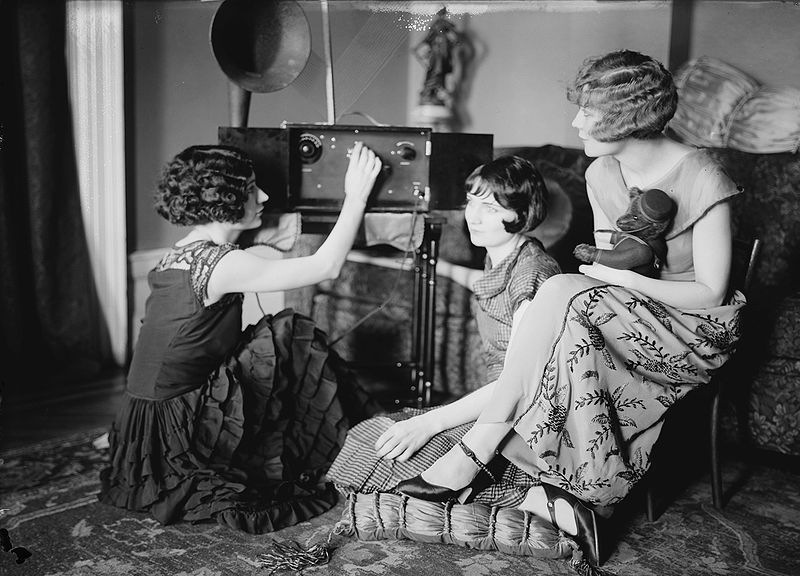
Brox Sisters Listening In. Courtesy: Library of Congress Online Prints & Photographs.
Post by Shawn VanCour, New York University
This is the twelfth post in our “Honoring Hilmes” series, celebrating the career and legacy of Michele Hilmes on the occasion of her retirement.
This series has offered much well-deserved praise for Michele Hilmes as a scholar, professor, mentor, and colleague, detailing her profound impact on her department, students, and field. I heartily concur with these sentiments but for the present post shift from a concern with “Hilmes” the person to what we might call the “Hilmesian” – by which I mean a certain set of observable tendencies in historiographical technique. I use the word “technique” here in the sense of a regularized set of formal devices deployed toward consistent ends within and across a body of work. What are the defining techniques of Hilmesian historiography, and to what end do those work?
In an effort to open this line of inquiry, I will focus on the technique of the “historical closeup.” For sake of space, my examples are limited mainly to the pages of Radio Voices, although the technique is by no means limited to this work (nor to the work of Hilmes alone). The questions I ask here are twofold: 1) how does the historical closeup work in Hilmesian historiography, and 2) what does it do?
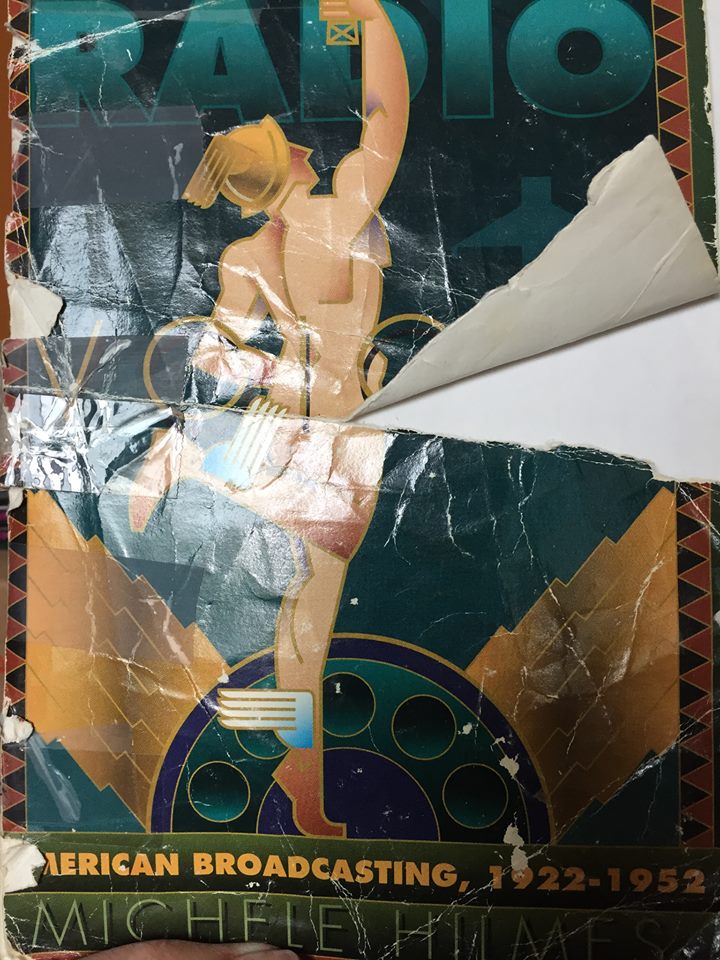
Well-worn cover of Radio Voices. Courtesy: Kathleen Battles.
1. Ghost Stories (History as Spectrology)
One of the most telling passages of Radio Voices comes at the end:
Historians must continue to investigate the boundaries between what is known and what has been excluded from knowledge, what is heard speaking loudly in our largest public forums and what remains pushed to the sidelines, silenced or muffled in our historical accounts – and must continue to analyze the purposes and effects of such selections [. . . .] History is always ideological . . . . written by historians whose training, purposes, and basic assumptions and selections intertwine with present-day needs and preoccupations, and it finds a readership based on similar affinities (RV 288).
We are to listen, then, to the margins of history, to the voices silenced in existing accounts. Elsewhere in Radio Voices, this is cast as a strategy of Foucaultian reversal, or looking past the “smooth face of consensus” in the dominant discourse to recognize “the ruptured and seamed lines of tension and resistance that consensus seeks to conceal” (RV xvii). Equally important, we are asked to question the ideological underpinnings of our own, revisionist historiography: under what conditions may alternative histories be written, what forms may they take, and what modes of solidarity can they foster?
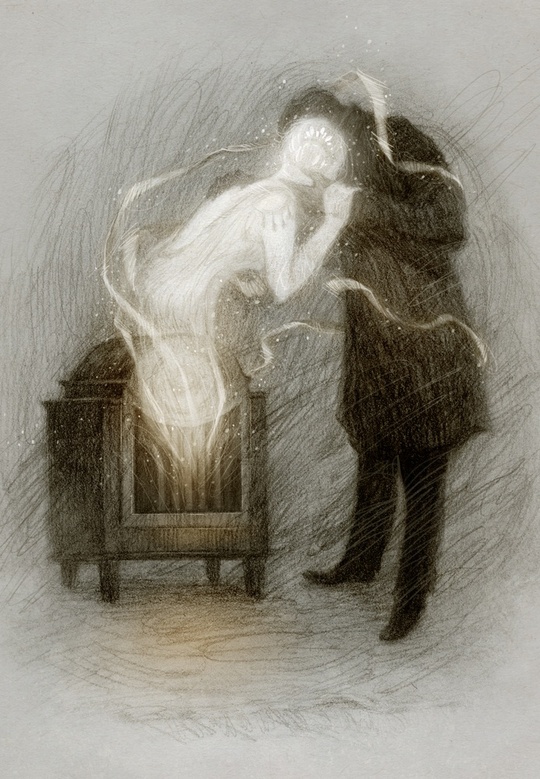
Radio Ghost. Painting by RovinaCai (2014).
While written under the sign of Foucault, there also lies within Hilmesian historiography a trace of a Derridean spectrology – an asking after what haunts our speech and clings to it as its very condition of possibility. What we are listening for here is not the voices of those who speak from a space “outside” the dominant discourse, but instead those who exist as absent presences within it, whose “silencing” or “muffling” is the condition for the dominant speech to itself be heard clearly. We listen for the murmurs of ghosts.
The goal here is not simply to restore these spectral voices to a past from which history has erased them, but rather to help their speech find a place within the dominant discourse of the present, creating conditions in which they may both speak and be heard. In Derridean terms, “[the scholar] should learn to live by learning . . . how to talk with [the ghosts], how to let them speak or how to give them back speech, even if it is in oneself . . . in the other in oneself: they are always there, specters . . . even if they are no longer, even if they are not yet” (Specters 221). This closing element of futurority (the “not yet”) is critical: the ghosts of history cannot, by nature, fully arrive within the present – they murmur, indistinctly, and it is the task of the historian to help find a place for their stories.
2. Dirty Optics (The Historical Closeup)
What, then, is the historical closeup, and how can it help us bring the ghosts of history into full presence? Here we may turn to Siegfried Kracauer’s book, History: The Last Things Before the Last, which he frames for his reader as the continuation of a line of inquiry first opened in his earlier book on film theory:
Recently I suddenly discovered that my interest in history . . . actually grew out of the ideas I tried to implement in my Theory of Film . . . . I realized in a flash the many existing parallels between history and the photographic media, historical reality and camera-reality (History 3-4).
First among these parallels was a tension between what Kracauer described as the “realistic” and “formative” tendencies, or competing needs to both respect and rework the reality documented by the camera or historian. However, as he was quick to note in his film book, “Objectivity in the sense of the realist manifesto is unattainable” (Film 15). The rendered reality was instead always inescapably shaped to some degree by the photographer-historian’s own subjectivity and larger concerns of his or her time. There is no possibility of a pure optics in Kracauer; there is no innocent or uncontaminated historical gaze.
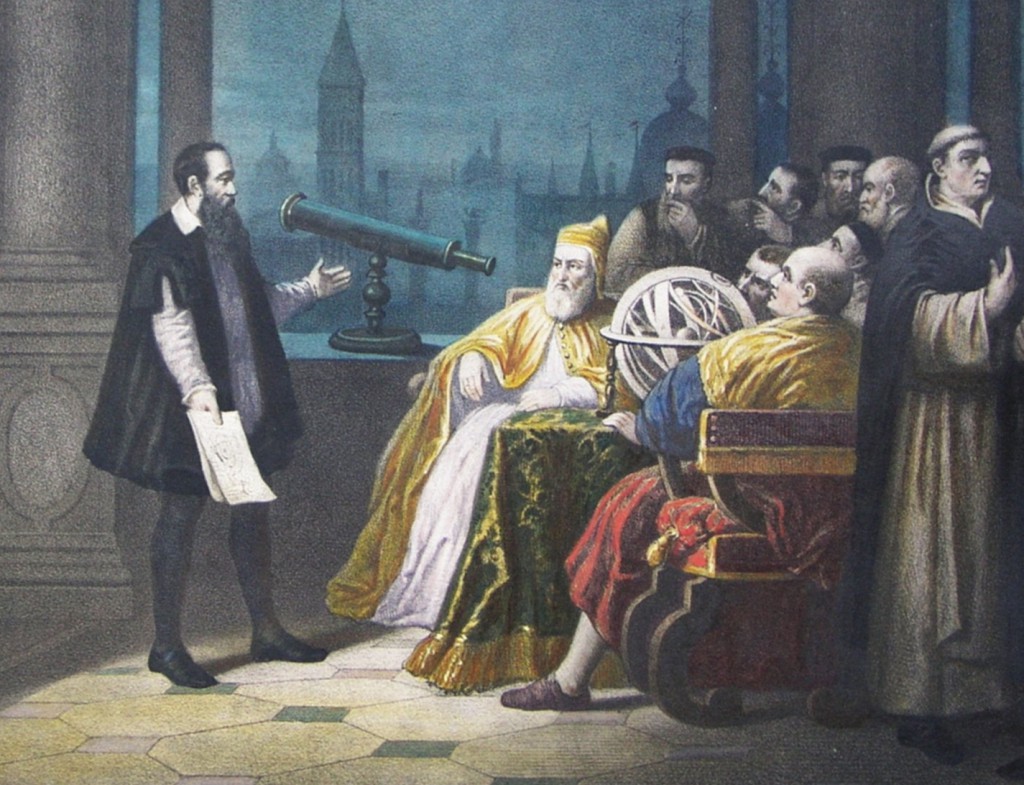
New perspectives: Galileo’s telescope. Detail from painting by H. J. Detouche (1754).
The second major tension negotiated by both the filmmaker and historian, for Kracauer, is that both “must . . . move between the macro and micro dimensions” (History 122). In his film book he had pointed toward “Griffith’s admirable non-solution” of alternating between long shots, which offered subjects and actions in context, and closeups, “which do not just serve to further the action or convey relevant moods but retain a degree of independence” (129). For historians, the closeup retained this same power to deform the larger totality of which it was a part:
As I see it . . . [we should] concentrate on close-ups and from them casually . . . range over the whole, assessing it in the form of aperçus. The whole may yield to such light-weight skirmishes more easily than to heavy frontal attack (History 134-35).
The goal here is political, challenging received histories to gain critical insights on the present. This aim is achieved not just at the level of content, but also of form, exploiting the disruptive power of the historical closeup.
3. The Hilmesian Closeup
Who or what forms the subject of these closeups in Radio Voices? They are multiple, including particular programs (from Amos n Andy to Real Folks and An Open Letter on Race Hatred), performers (from Samuel Rothafel to Wendell Hall and Jack Benny), writers and producers (notably, below, Irna Phillips, Anne Hummert, Jane Crusinberry), and advertising agencies (J. Walter Thompson). In some cases, these are familiar figures whose examination in closeup serves to denaturalize the dominant narratives in which they have been traditionally inscribed, letting them begin to speak otherwise. In other cases, they are spectral presences, the muffled voices of those whom history has erased, invited back into the picture to say their piece.
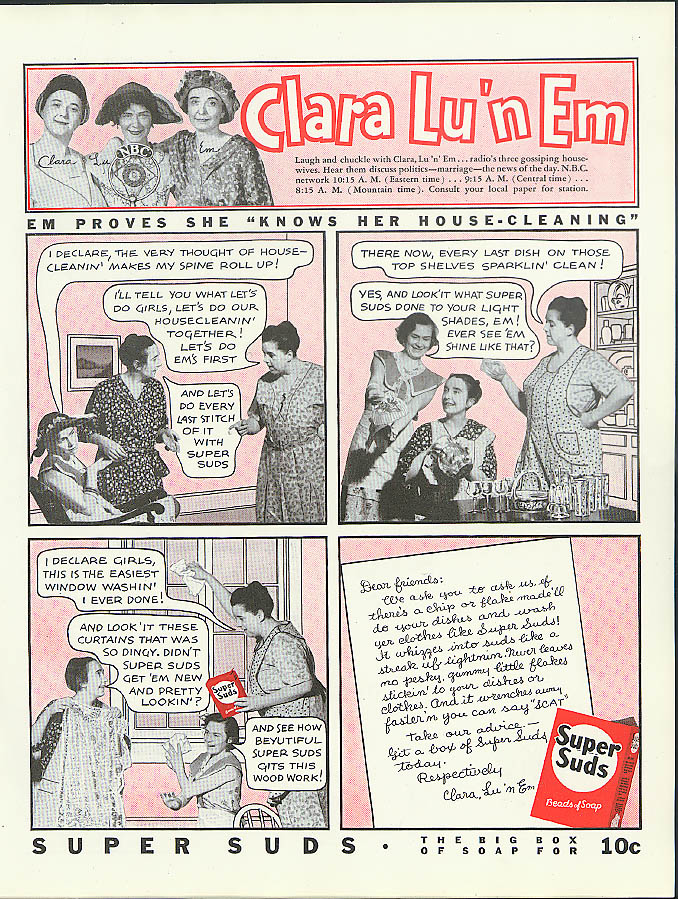
1930s Magazine ad: Super Suds brings you NBC’s Clara, Lu & Em.
As an example of the Hilmesian closeup in action, we may look to Chapter 6 of Radio Voices, titled “Under Cover of Daytime.” As with most chapters in this book, we open in long shot: whereas the early 1930s saw shows like The Goldbergs, Myrt and Marge, and Clara, Lu and Em running alongside more general-interest programming in the evening, as network radio expanded, women’s programming assumed a more “subordinate position” in daytime hours and was widely disparaged by critics for its sensationalism and crude commercialism (RV 151). From here we move into an even wider shot, as Hilmes discusses early twentieth century consumer culture’s production of what advertising historian Roland Marchand calls the “feminine mass,” seen as over-emotional, easily manipulated, and lacking in taste. At this point, an initial thesis is advanced: the relegation of more “feminized” and overtly commercial programming to daytime hours served a double containment strategy of 1) controlling women’s voices and 2) reconciling network broadcasting’s competing mandates for private profit and public service (152-3).
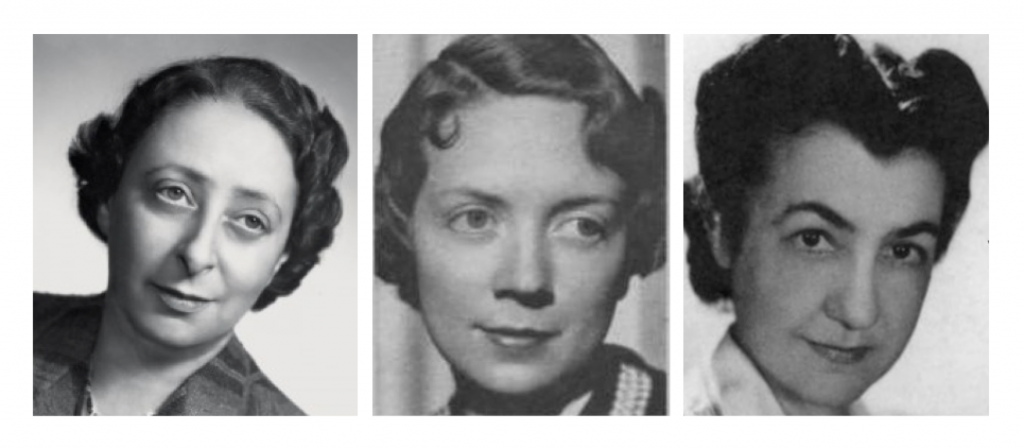
L-R: Irna Phillips, Anne Hummert, Jane Crusinberry.
Three successive closeups of soap producers Irna Phillips, Anne Hummert, and Jane Crusinberry complicate this picture and work in dialectical tension with the opening long shots, showing how the daytime containment strategy at the same time created a space in which women and women’s issues could achieve greater public visibility and cultivate the solidarity needed for the formation of an effective “counterpublic” (RV 159). A closing return to long shot moves back to the previously posited daytime/nighttime division, the intermediary passage through a series of closeups having now challenged what at first appeared to be a strategy of subordination. What lies “Under Cover of Daytime” is not just the persistent commercialism that formed the seedy underbelly of network radio’s surface-level public service commitments, but also the creation of a protected public space in which women could build solidarity and begin to mount challenges to a dominant discourse that had traditionally excluded them. The voices of radio were not just those of male-dominated evening dramas and comedy/variety shows, but also those of daytime women’s programming, which are no longer forgotten or dismissed but now recognized for the serious cultural work they performed.
Nearly every chapter in Radio Voices follows this structure: a “big picture” presented in long shot with larger cultural contextualization leads to the formation of an initial thesis that is then strategically unsettled or modified through the technique of the closeup. The closeup becomes a means to resist or challenge the master narratives and sweeping views to which cultural history might otherwise be prone, a means of politicizing the telling of history at the level of form. It is a technique, I would suggest, that we also find deployed across other works by Hilmes, as something properly Hilmesian, though importantly, not the exclusive property of Hilmes. The historical closeup remains a vital tool for a critical cultural historiography that aims to restore the voices of those silenced in the past and create a space within the present in which they can be heard. Its Hilmesian deployment offers a valuable lesson in how to rewrite history, change the dominant discourse, and begin to make room for our dead.


